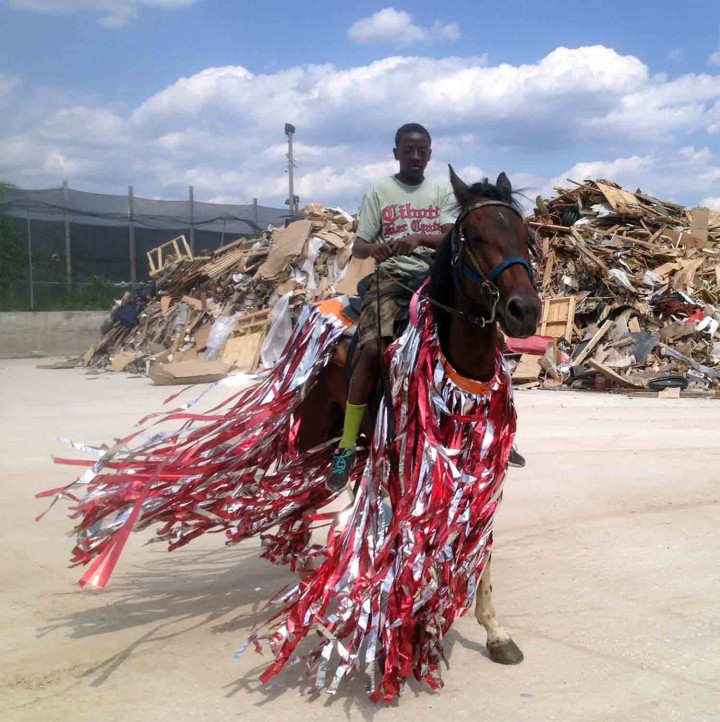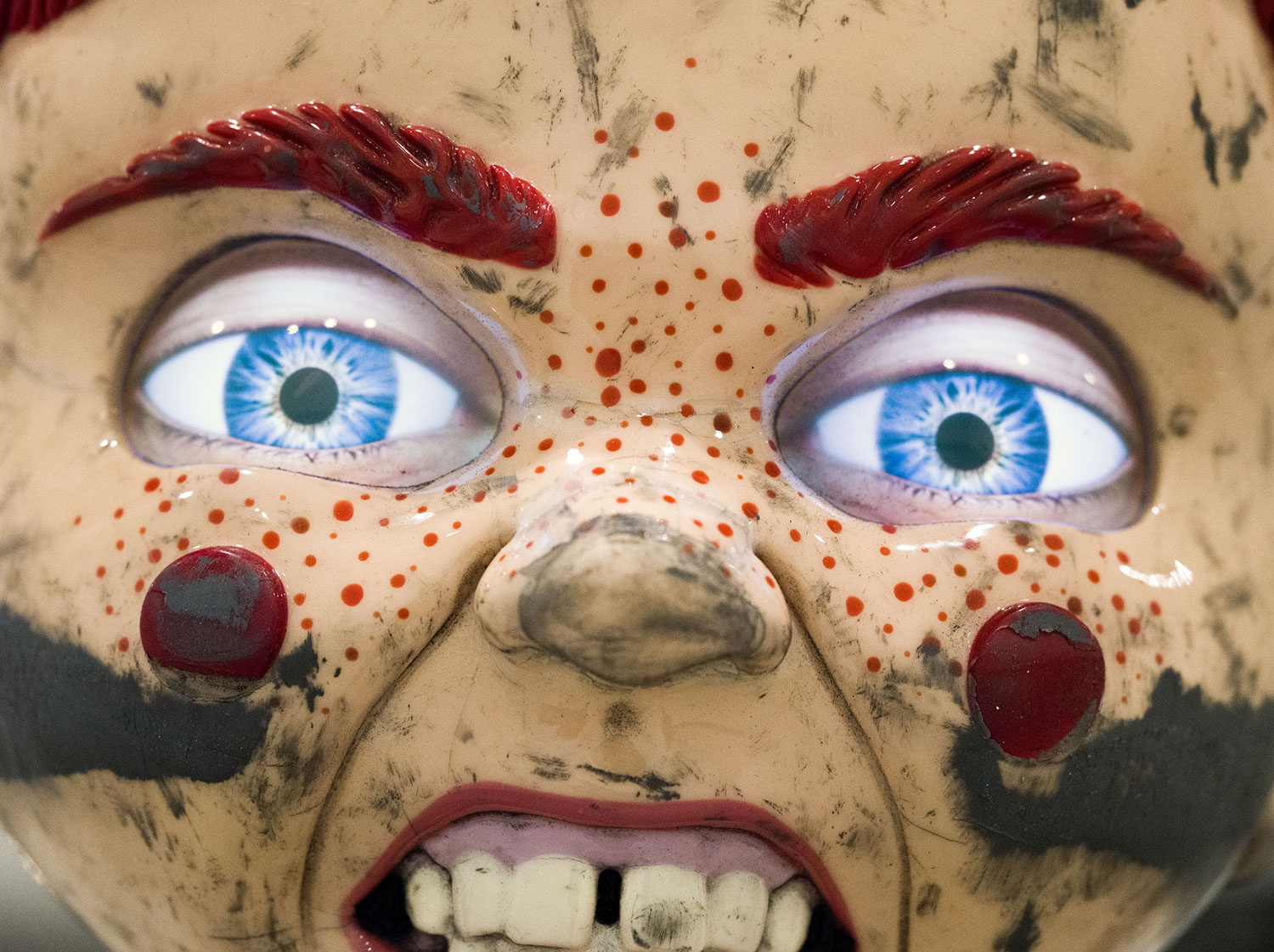An adrenalizing up-tempo sound track makes it hard for visitors to suppress a beatific grin during the climax of Mohamed Bourouissa’s video diptych Horseday (2015). On one screen a rider gallops down a Philadelphia street ahead of a roaring emerald-green Buick, while the second displays a “horse-tuning” event where riders flaunt their lavishly dressed horses and effortless riding abilities.
The first in a series of “Stedelijk Contemporary” exhibitions, Bourouissa’s two-gallery installation introduces a new composition to the “Horseday” project he began in 2013. Bourouissa arrived a decade ago with his series “Périferique” (2005–2009) about the banlieues of Paris, in which he founded a practice dedicated to immersing himself in secluded communities and thereby producing work with rather than about their inhabitants. He is interested in the functioning of social systems — especially subcultures — and inverts perspectives by challenging set perceptions and stereotypes. For “Horseday,” Bourouissa spent several months with the Black community of the Philadelphia-based Fletcher Street Urban Riding Club, proceeding to organize a horse-decorating competition between the club and local artists. While the subsequent footage is apparently documentary, it is in fact meticulously staged, framing the imagery within a lineage both photographic and art historical.
Bourouissa has carefully choreographed this installation to harmonize video with photography and sculpture. Positioned within an intimate, almost domestic, setting incorporating a black leather sofa, the horses’ costumes are hung, as if on saddle racks in a tack room, next to sculptures of car body parts photos of the Philadelphia cityscape and a mounted color print of an “urban cowboy” that is visually analogous to Jacques-Louis David’s Napoleon Crossing the St Bernhard Pass. The restaging of video imagery within the real space of the exhibition immerses the viewer in the artist’s perspective — that of an outsider turned insider.


